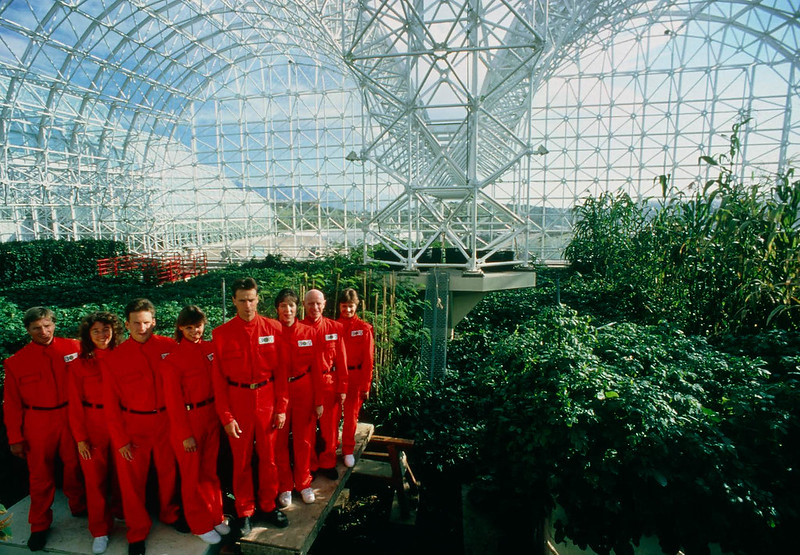
Sundance Film Review: Spaceship Earth
Sundance
Spaceship Earth
Sundance Film Festival
Director: Matt Wolf
In 1991, eight carefully selected scientists volunteered to live in an airtight glass structure for two years. Inspired by the idea of an “adobe spaceship,” these scientists worked to cultivate the land and become self-sustaining with the idea that, one day, putting this type of structure into space.
Spaceship Earth tells of the origin story of Biosphere 2 (earth is considered biosphere 1) and the events that led up to the experiment. Widely considered disastrous by the media and the scientific community at the time, Spaceship Earth explores Biosphere 2’s importance to pop culture, science and the human imagination.
Personally, most of what I heard about Biosphere 2 were the negatives—in-fighting between the scientists trapped inside and rising carbon dioxide levels that almost drove them out. Spaceship Earth doesn’t attempt to mask any of the controversy surrounding Biosphere 2, including the negativity around the man who was the leader behind the project, John Allen. A charismatic man with humble beginnings on the Oklahoma frontier, Allen first attracted scientists and engineers in a commune-like environment that combined self-sustainability, science, engineering and even theater. The first half of Spaceship Earth follows the group as they leave San Francisco in the early ’70s for New Mexico, where they started a ranch called Synergia in order to become more self-sufficient (Synergia is still in existence today). The group went on to tackle business ventures across the world, all of which coalesced into the idea for Biosphere 2, which they considered the first step of moving toward living in space.
I found the origin story of Biosphere 2 extremely fascinating, especially the work as a commune and the dynamic between the members, a few of whom were interviewed in the film. Spaceship Earth even explores the allegations that the group involved with Biosphere 2 was essentially a cult with Allen at the helm. Though the project initially started out with good intentions and those involved knew that “failure” was likely, Spaceship Earth stresses how media involvement, growing corruption and internal distrust snowballed into a “failed” experiment.
For me, hearing Linda Leigh, one of the eight scientists enclosed in Biosphere 2, was some of the best testimony in the film. Her story and her love for the work she put into nurturing the horticulture of Biosphere 2 is fascinating and even a little heartbreaking. Leigh, a self-proclaimed social outsider who relished living in an enclosed environment, says at the end of the film that the earth is already experiencing the worst-case scenario situation with regard to climate change. Her range of emotions and even anger toward Allen, at one point, is poignantly comes forth by the film via recorded phone calls to her therapist while she was inside of the dome. For her, the experiment, even with its snags and criticisms, was important in understanding small group dynamics and lessons in sustainable living.
Spaceship Earth is a thought-provoking film that sparks the imagination as climate change becomes the biggest issue this generation is faced with. The film explains why Biosphere 2 wasn’t exactly a failure, though it was often framed as one. While the permeating attitude about Biosphere 2 considers the experiment a dismal failure, Spaceship Earth presents the response, “Yes, but what did we learn from this?” –Ali Shimkus
Read more of SLUG’s comprehensive coverage of the 2020 Sundance Film Festival.